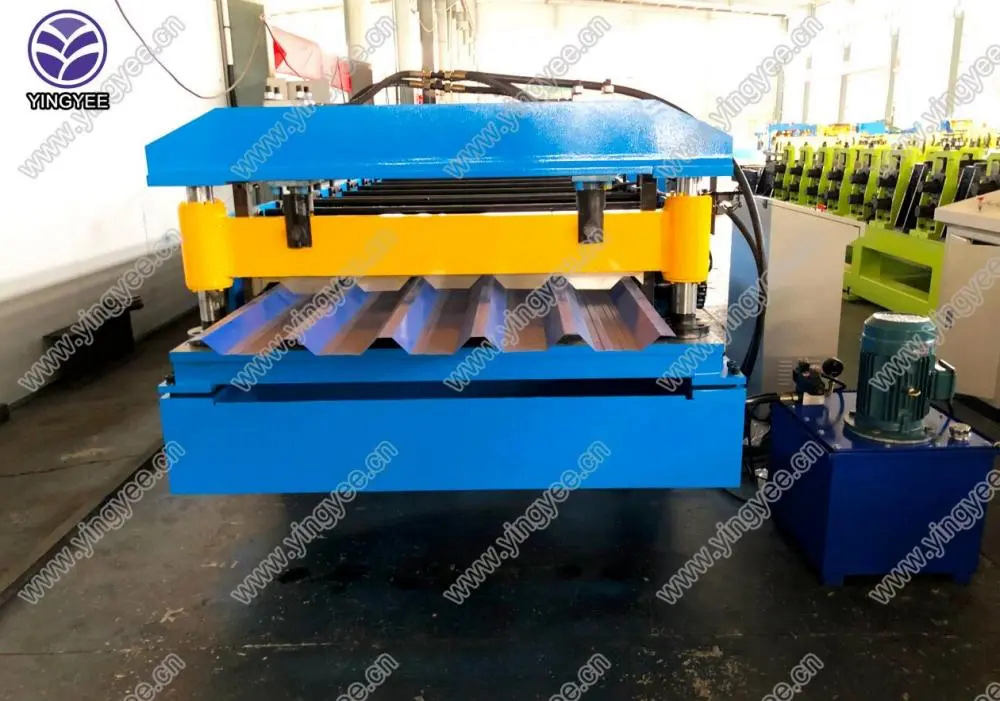
The Ceiling T Bar Roll Forming Machine Revolutionizing Construction and Interior Design
In the world of construction and interior design, efficiency and precision are paramount. One of the innovations that has significantly advanced these industries is the Ceiling T Bar Roll Forming Machine. Often overshadowed by more traditional machinery, this innovative equipment is becoming increasingly crucial in the manufacturing of suspended ceilings, which are a staple in commercial and residential buildings alike.
Understanding Ceiling T Bar Systems
Before delving into the significance of roll forming machines, it's essential to understand what T Bar systems are. Ceiling T Bars are the structural elements that create a grid pattern on which ceiling panels are hung. These T-shaped bars are crucial for supporting the ceiling tiles and maintaining the aesthetic appeal of the space below. The bars come in various sizes and materials, with galvanized steel being a popular choice due to its strength and resistance to rust.
The Role of the Ceiling T Bar Roll Forming Machine
A Ceiling T Bar Roll Forming Machine is designed to produce these T Bars with exceptional accuracy and efficiency. The machine employs a continuous roll forming process, where a coil of metal is fed through a series of rollers that shape it into the desired profile. This process not only streamlines production but also ensures that each T Bar meets strict dimensional and quality standards.
The advantages of utilizing a roll forming machine over traditional manufacturing methods are manifold. First and foremost is the unmatched consistency in production. The roll forming process allows for high-volume manufacturing with minimal variance in dimensions, thus reducing waste and enhancing the quality of the final product. Additionally, this machine can produce different profiles in quick succession, catering to the diverse needs of customers without significant downtime.
Economic Benefits
Investing in a Ceiling T Bar Roll Forming Machine can lead to significant economic benefits for manufacturers. By reducing labor costs through automation and increasing production efficiency, manufacturers can improve their bottom line. The machine is capable of operating continuously, resulting in higher output rates compared to manual processes.

Moreover, because roll forming machines typically require less maintenance and repair than other manufacturing equipment, operational costs are further reduced. This efficiency translates into lower prices for consumers, making high-quality ceiling solutions more accessible.
Environmental Considerations
In an age where sustainability is becoming increasingly important, the roll forming process also offers environmental advantages. The continuous nature of the process generates less scrap material than traditional cutting methods. Efficient material usage not only saves resources but also reduces the carbon footprint associated with production. Many roll forming machines are designed to accommodate recycled materials, aligning production practices with environmentally friendly standards.
Versatility and Customization
One of the standout features of the Ceiling T Bar Roll Forming Machine is its versatility. These machines can be customized to produce T Bars of varying sizes, shapes, and thicknesses, making them suitable for a wide range of applications. Whether it’s for a small residential project or a large commercial construction, the roll forming process can adapt to meet specific customer requirements.
Furthermore, advanced technology allows for the incorporation of features such as perforations and notches, which can be essential for certain design aesthetics and functional needs. As architects and designers continue to push boundaries, the need for customizable and high-quality materials becomes ever more important.
Conclusion
The Ceiling T Bar Roll Forming Machine represents a pivotal development in the manufacturing of construction materials. By delivering precision, efficiency, and adaptability, this machine not only meets the growing market demands but also supports sustainable practices in the construction industry. Whether for new builds, renovations, or modern interior design projects, the roll forming technology is firmly establishing itself as a cornerstone of contemporary construction. As we move forward, embracing such innovations will undoubtedly shape the future of building design and manufacturing, driving the industry toward a more efficient and sustainable path.